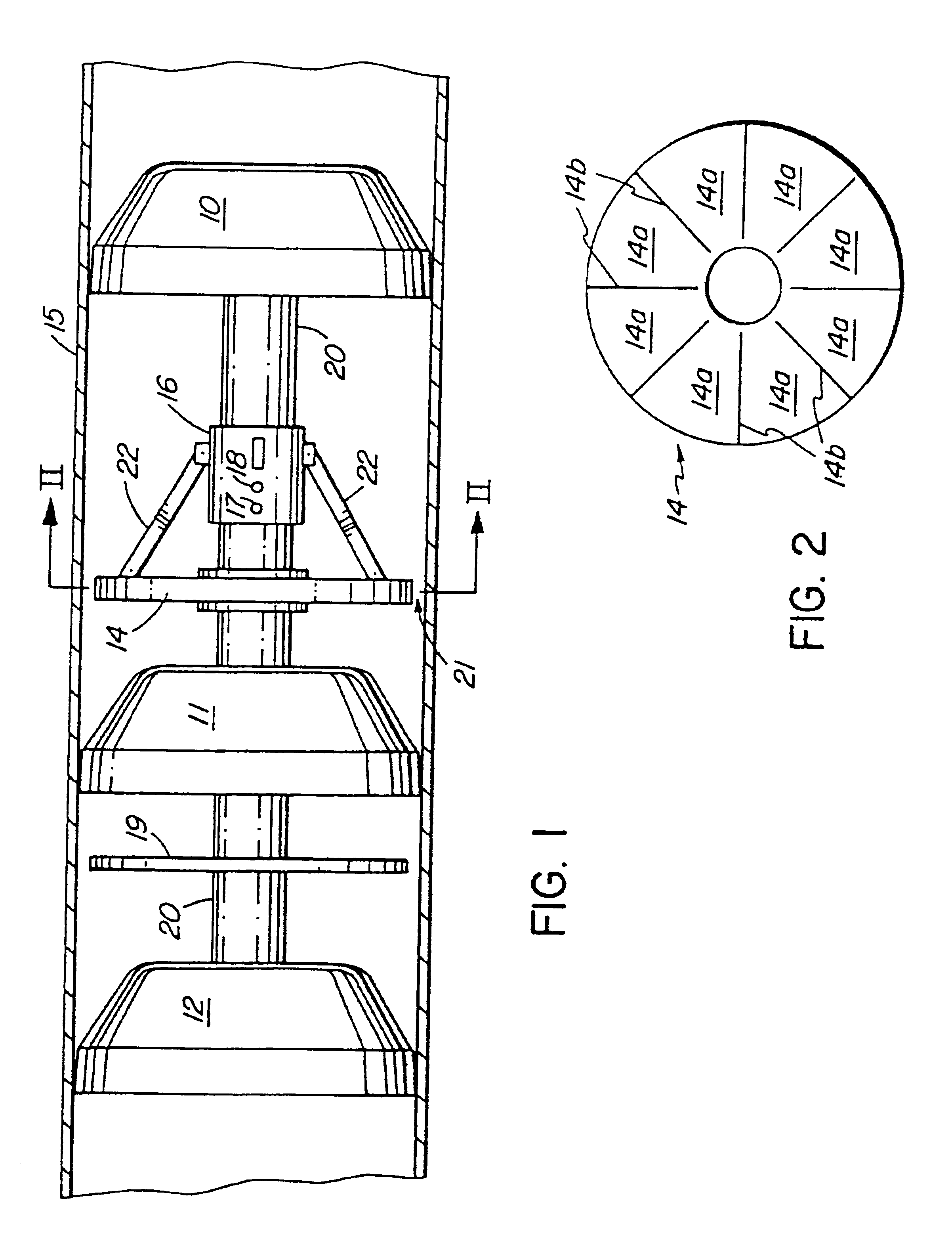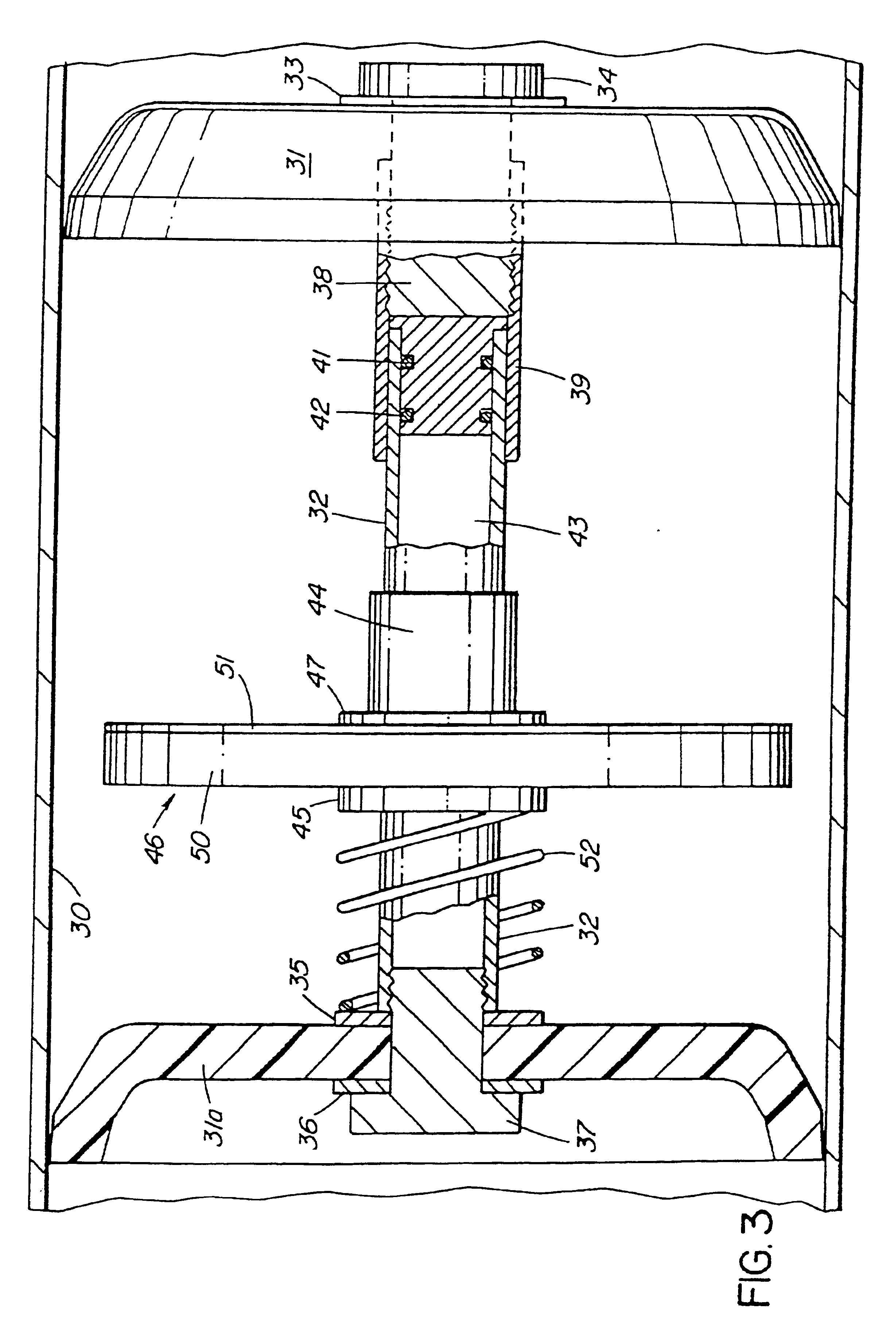Pig for detecting an obstruction in a pipeline
a technology for obstructions and pipelines, applied in the direction of measuring devices, electrical/magnetic diameter measurements, instruments, etc., can solve the problems of increasing the cost of replacement of damaged discs, high production costs, and undetected results
- Summary
- Abstract
- Description
- Claims
- Application Information
AI Technical Summary
Benefits of technology
Problems solved by technology
Method used
Image
Examples
first embodiment
the inventive caliper pig is provided with supporting elastomeric rings 10, 11, 12 connected to a centrally disposed cylindric body one after the other and comprised of a front ring 10, an intermediate ring 11 and a rear ring at the back end of the pig.
A segmented, generally disk-shaped resilient member has a number of segments separated from each other along a generally radial line of separation 14b. The member 14 is concentric with the support or guide rings 10-12. It is fixedly secured to the body 20 between the front support ring 10 and the intermediate support or guide ring 11. The resilient member 14 has a smaller outside diameter than the inside diameter of the pipeline 15. The member 14 thus defines an annular void between its outer surface and the inner surface of the pipeline wall. The member 14 may be provided with a scratch recording leading face not shown in FIGS. 1 and 2 but described later with reference to FIGS. 3 and 4.
The radial width of the void 21 is predetermine...
PUM
 Login to View More
Login to View More Abstract
Description
Claims
Application Information
 Login to View More
Login to View More - R&D
- Intellectual Property
- Life Sciences
- Materials
- Tech Scout
- Unparalleled Data Quality
- Higher Quality Content
- 60% Fewer Hallucinations
Browse by: Latest US Patents, China's latest patents, Technical Efficacy Thesaurus, Application Domain, Technology Topic, Popular Technical Reports.
© 2025 PatSnap. All rights reserved.Legal|Privacy policy|Modern Slavery Act Transparency Statement|Sitemap|About US| Contact US: help@patsnap.com



